The Fuji GA645i is sitting on my desk looking absolutely gorgeous, about to be packed up and sent to its new home. It’s a camera I bought essentially because I was looking for newish roll film camera and I thought these Fujis were good value and I could not justify a GF670 which even a couple of years ago seemed insanely dear to me. (Wish I’d bought a couple then; I could sell them and buy an island.) But moving on, the GA645i is a camera that I think is great, but which does not suit the way I shoot.
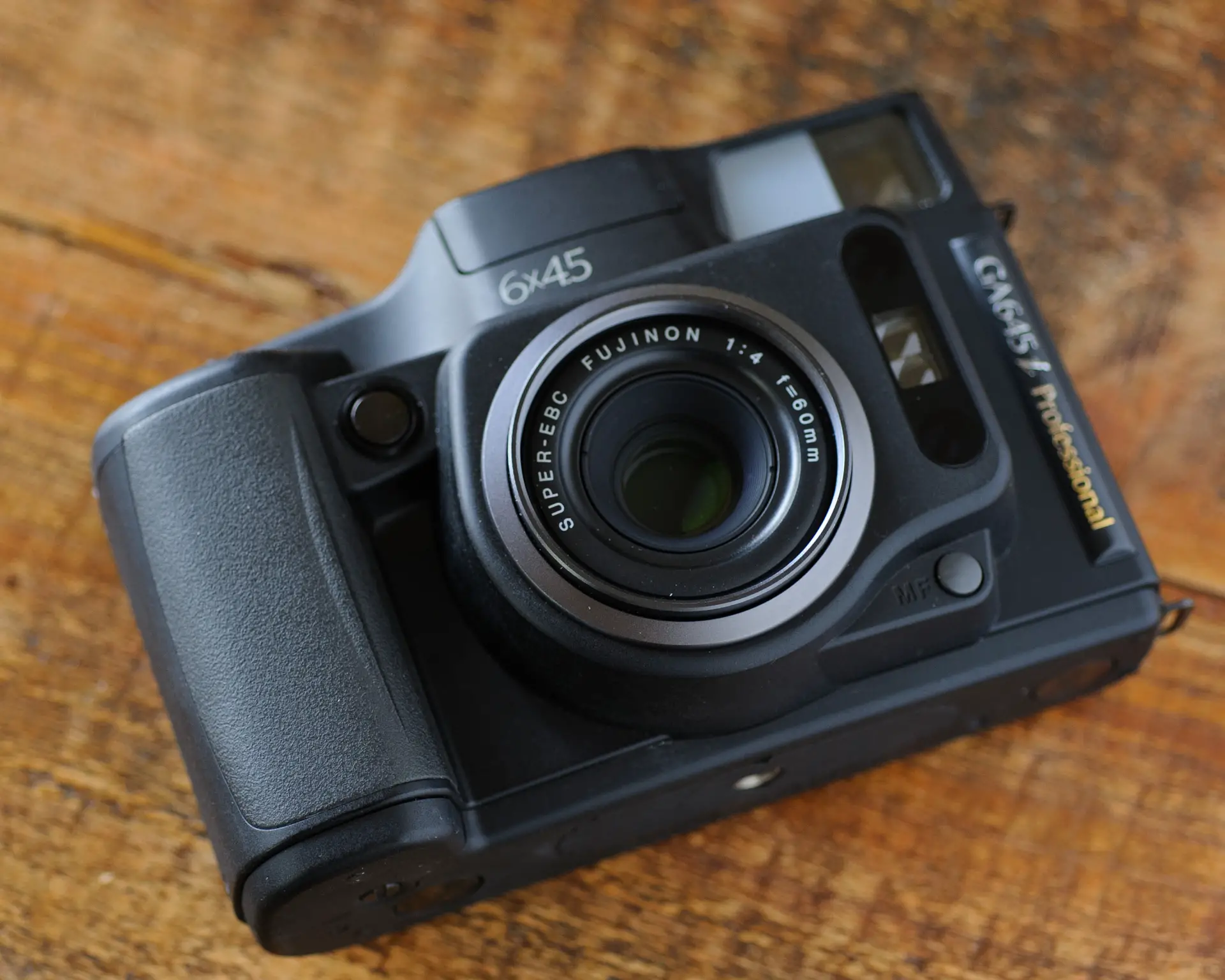
It’s a roll film point-and-shoot. Perhaps it’s THE roll film point and shoot? Are there others apart from the Fuji series? I don’t know. The thing is, all I have used it for is landscapes shot at infinity, and this has AF by default. Every time I’d take it out I’d go, “this damn thing has got to go,” because I’d get the horizons crooked. I simply CAN’T hold the thing straight in landscape mode, or I’d curse the trouble needed to set the manual focus at infinity (which takes less than a second actually) or whatever – something would annoy me, or I’d forget how to use some feature and miss a shot. But then I’d get the films back and there would be one or two on every roll that were among my best, and I’d think, “What kind of idiot would sell the camera that they are using to get their best shots?”
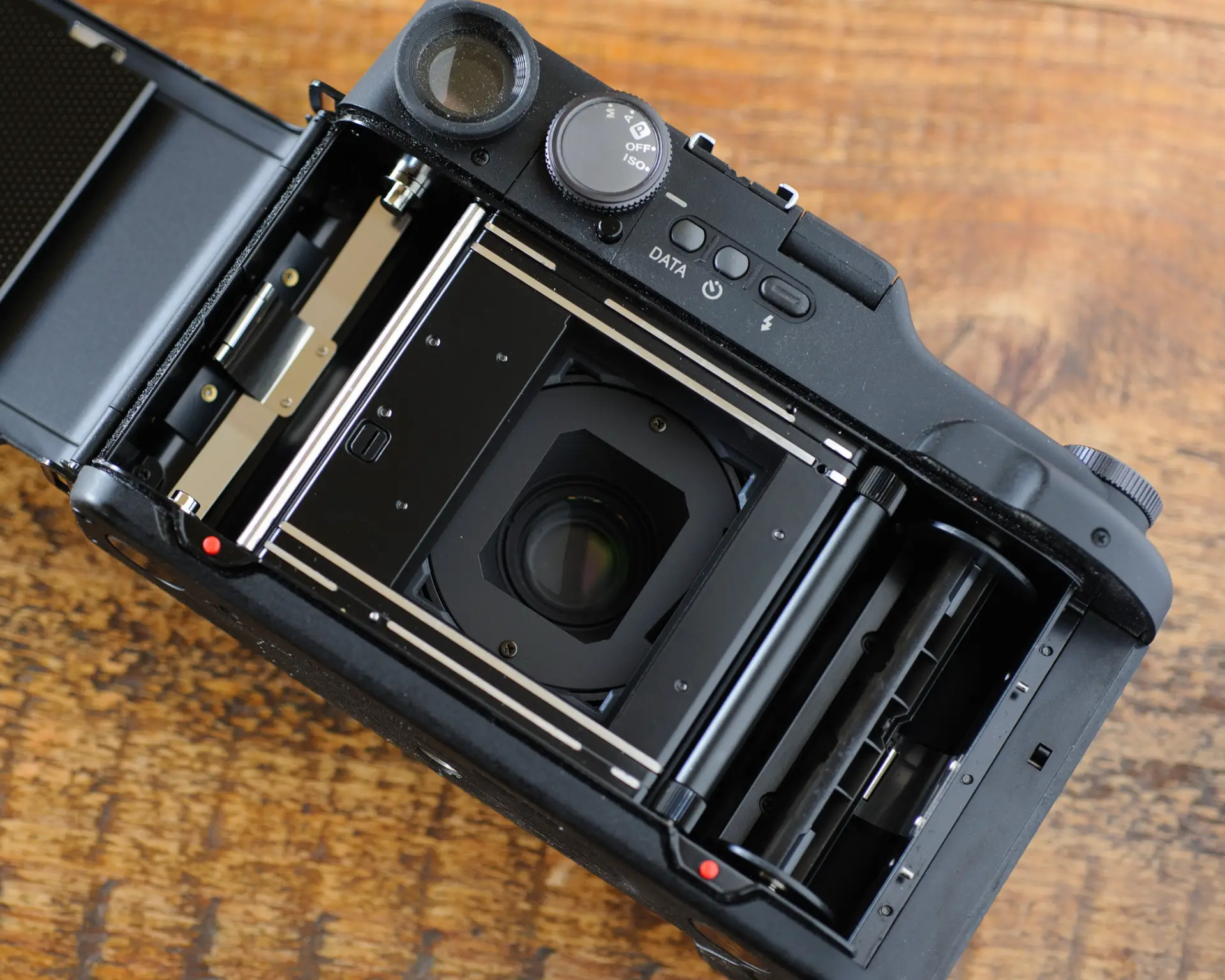
So it would seesaw like that and I’d pop a half-hearted for sale post on a FB group for a bit more than I thought it was worth and then be glad it didn’t go.
But their values have jumped recently and someone who seemed like a genuine shooter called my bluff on an old sale offer I’d made and wanted to buy it. I have way too many cameras to the point that I need to get rid of some because it hurts my work to not be super-familiar with what I’m using, and so it’s goodbye.
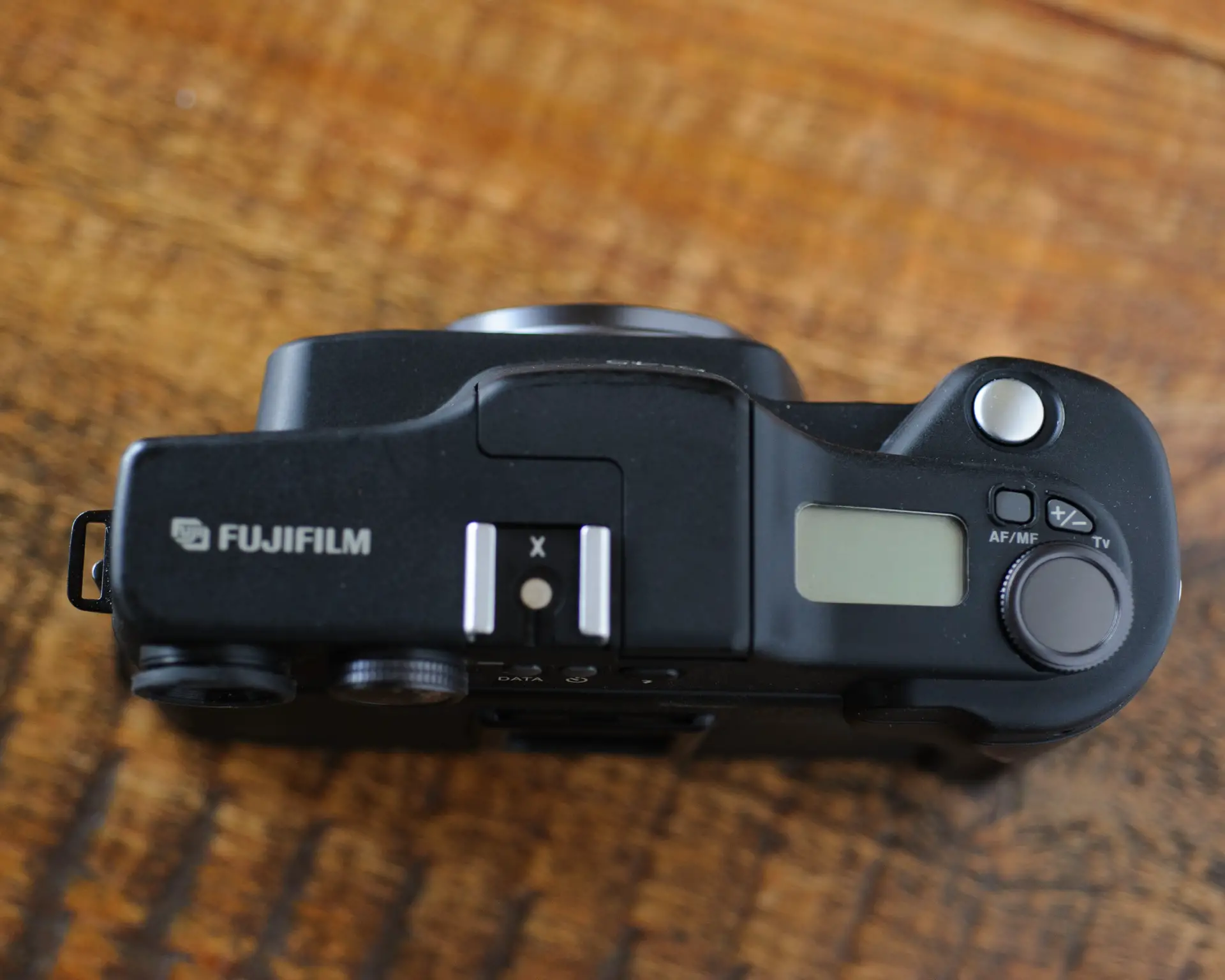
Anyway – this is obviously my last five frames with it, so here’s the story behind that too.
About a year ago a friend passed on to me a whole shoebox of various expired films, 120 and 135, generally about 20 years old, stored in a box in the shed and witness to 20 or so good old Australian summers. Each roll a lottery – but I got some of my favourite shots out of this stuff – especially the 120 transparency film, which I would digitise myself with a digital camera. A few rolls were EPT – Ektachrome 160T (Tungsten balanced).
I used to shoot a bit of 160T commercially back in the day; the theory being that if you were shooting under tungsten there would be less light, and if you wanted to use it in daylight you’d put a warming filter on and with the brighter daylight it would not be an issue to lose the speed that the filter took off.
These five frames come from an hour spent standing on the coast as some weather came past and the skies were sensational. I could tell that I was in for something special that day. I actually thought of using a fresh roll of Portra 400 to make sure I got something, but remembering the Oscar Wilde quote “an idea that is not dangerous is not worthy of being called an idea” in went the EPT and off went I.
My expectation with this old film was that this would have lost a fair bit of contrast and range over the years, so I’d shoot it only in low contrast situations and be prepared to totally blitz the crap out of it in post to see if I could get something I liked out of it. This day was gloomy and I thought the lighting of the sky would make it meter a bit low, so I set the ISO for 120 on the camera to bump it a bit and away I went.
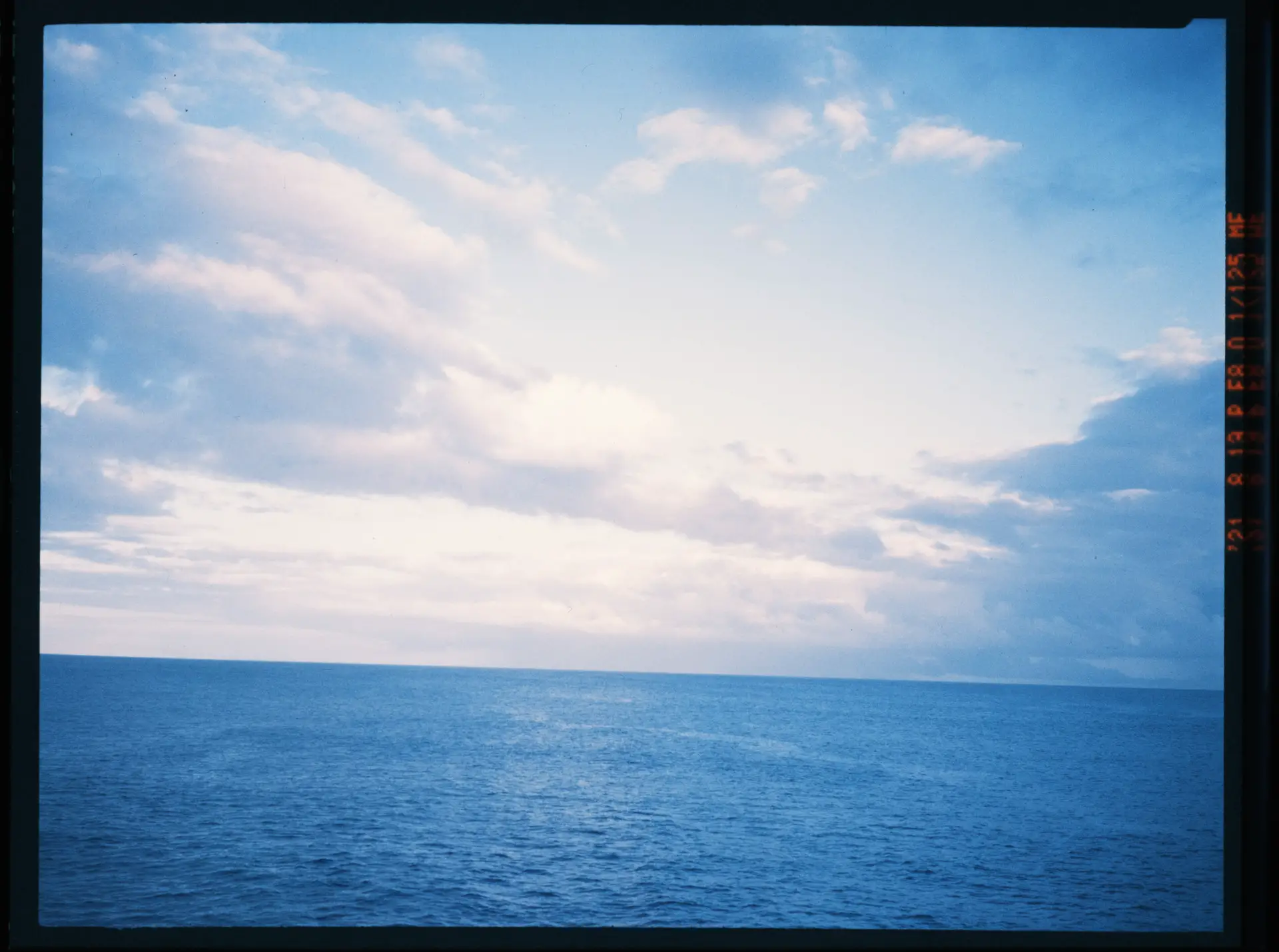
The hour was really intense. As I’m now retired from commercial work I’m currently doing a Masters in Contemporary Art for a bit of fun, and it has been very instructive hanging out with people who also have very strong reactions to visual things. Being out there in the weather for this was an experience that was wonderful, but quite draining because I was so overloaded by the beauty of the environment.
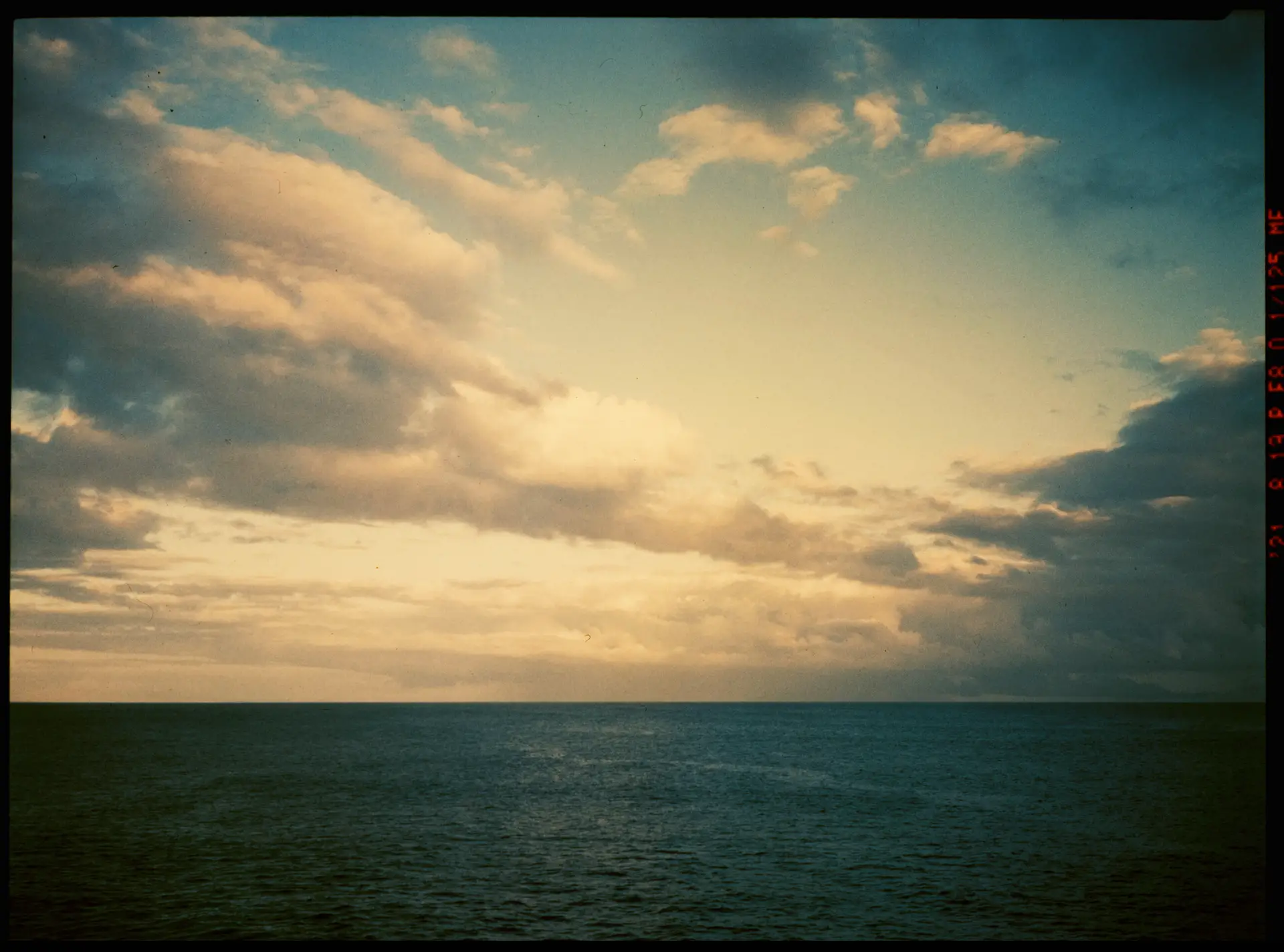
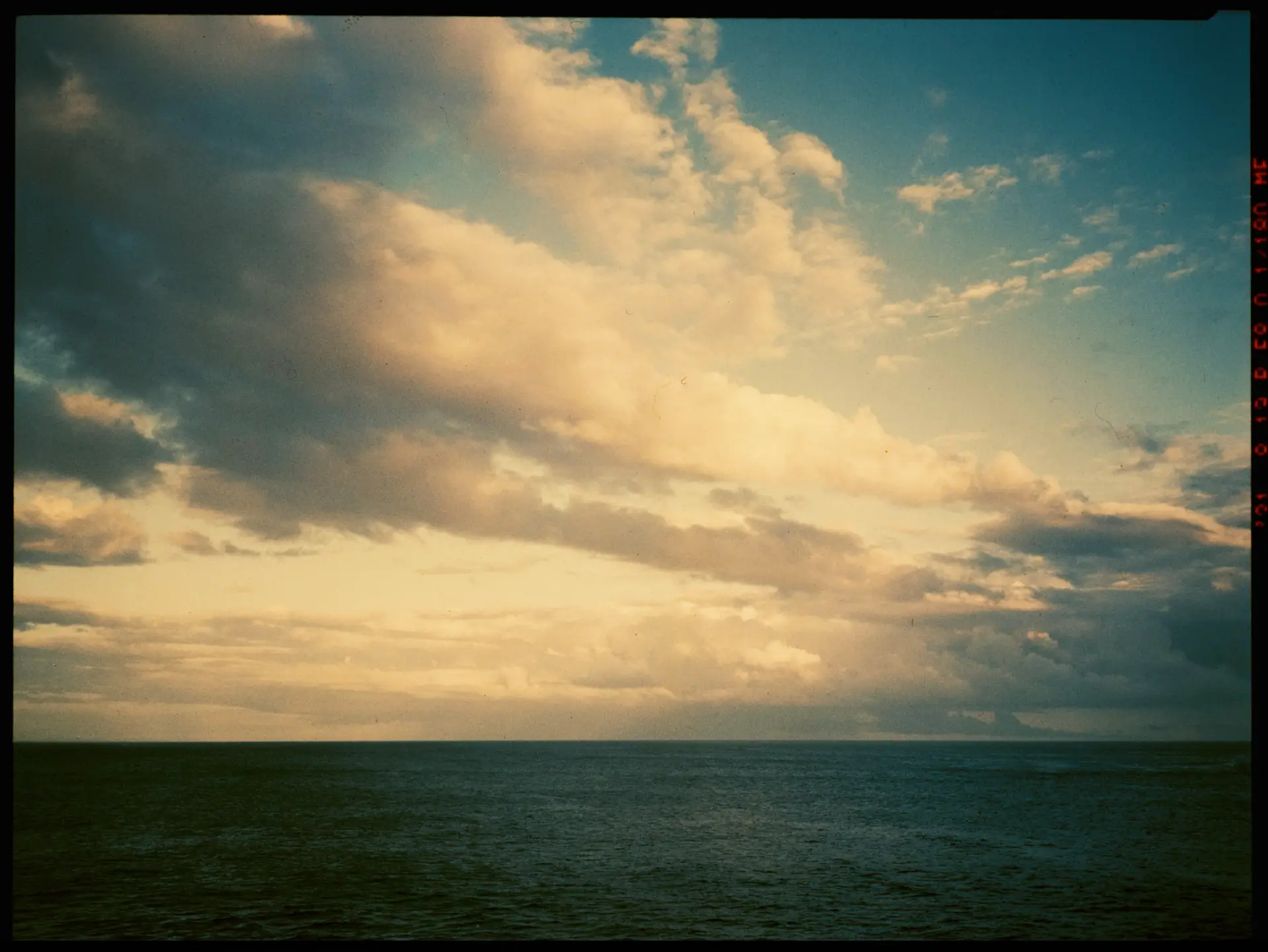
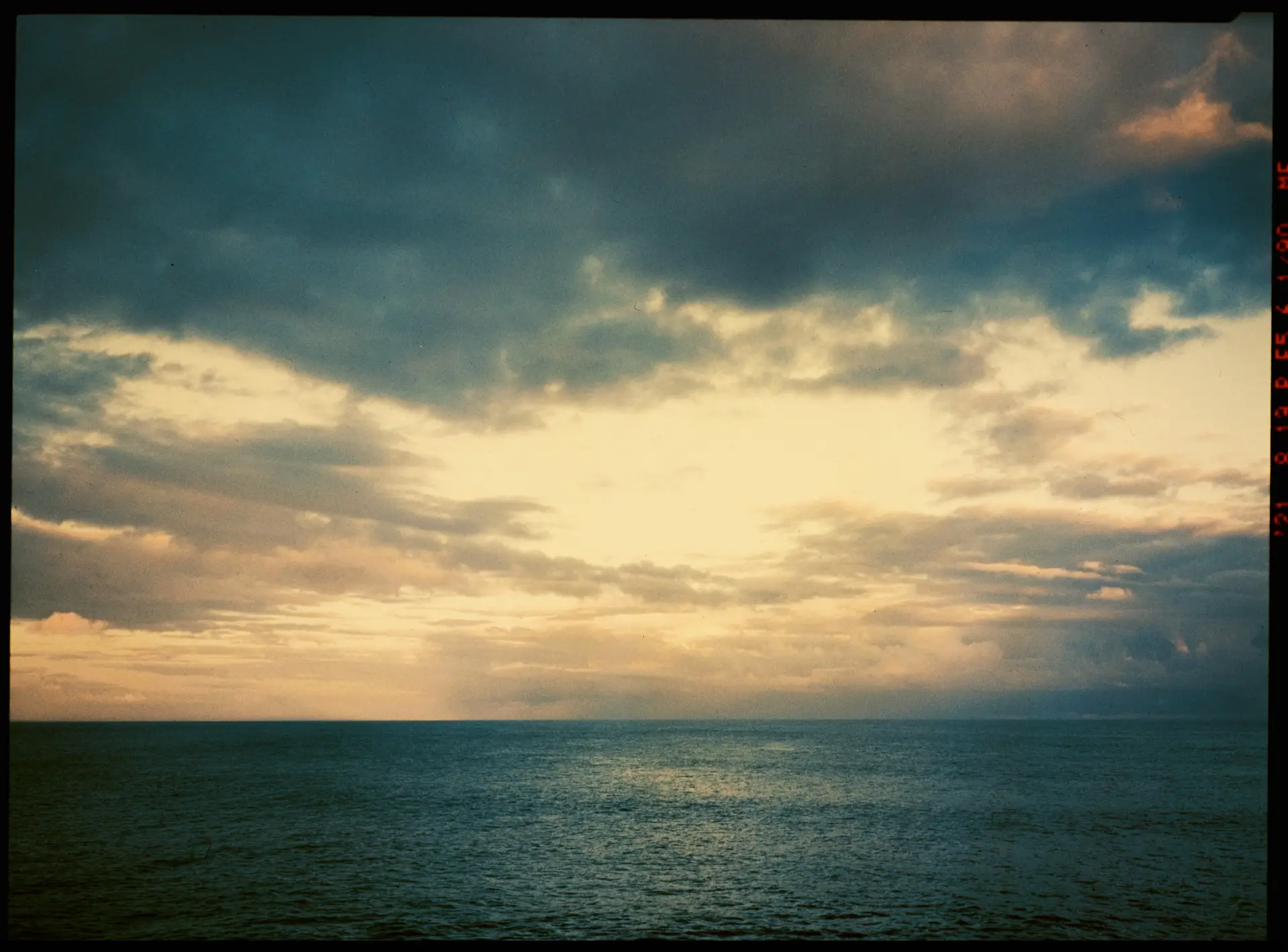
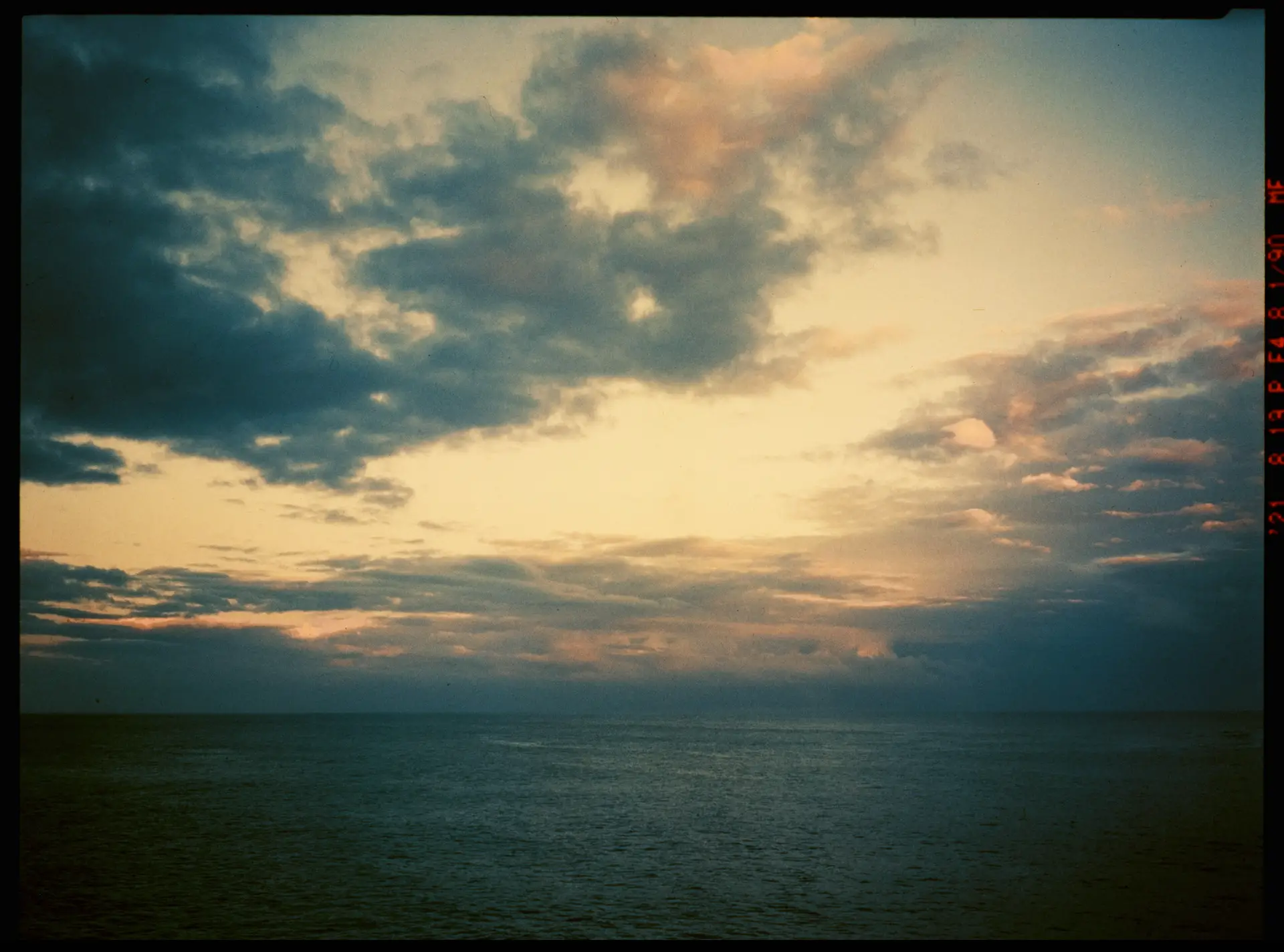
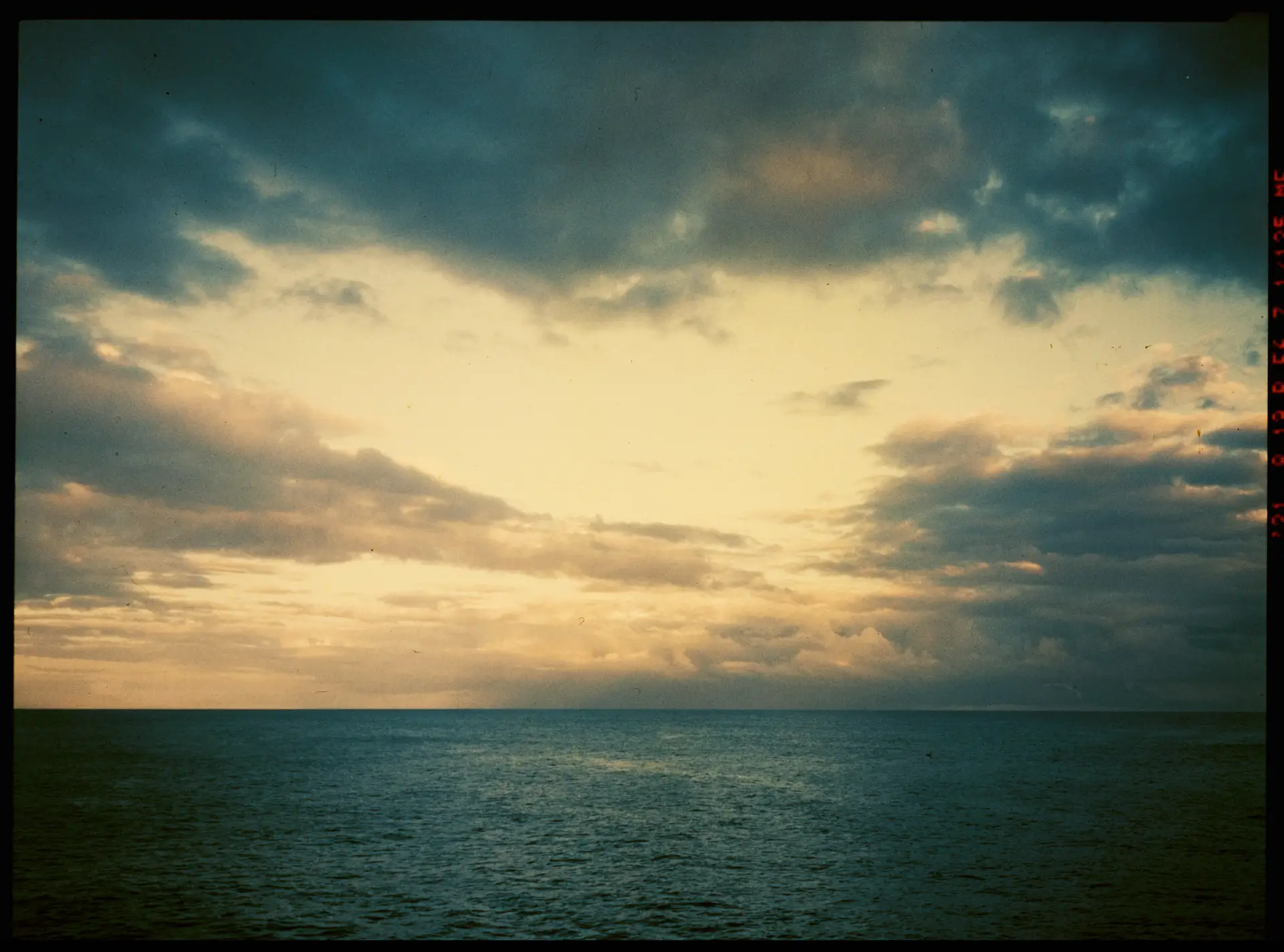
I love these shots, but I realise that not everyone will share this view. My cloud shots are not my most popular, and I imagine people think “Oh yeah, clouds. Yawn.” I don’t though. My work is based a lot on repeated close observation of nature, and I’m starting to realise more about how and what I see.
So I hope you enjoy the frames.
It’s also a good opportunity for me to get on my hobby horse about the film just being a starting point, and the digitisation, or scanning, or printing – whatever – being an integral part of the process. Hence putting the “before” frame in to show what came off the film. The same holds if you’re shooting neg, but with tranny it’s more obvious, and of course in the old days the tranny was the end of the story; that is what I’d be giving to the client.
What else to add? I guess I could mention that I left the edges of the frames in because I wanted these to say “you are looking at a photo – you are not looking at the sea.” And in terms of how I’ve post-processed them, I’ve adjusted them for screen. If I were having them printed I’d probably change them a bit depending on what the printing process and medium was going to be. I’ve now given these to a friend who is going to use them as a basis for some oil paintings and I can’t wait to see what she does with them.
So – I currently don’t have a 645 camera. I do have a Blad though that I don’t really use, so the plan is the Blad will step in for this kind of work. I might even get a 645 back for it or I might not bother (not bother is winning at the moment.)
My current work kit then is the Blad or an Agfa Isolette III for 120 and a Nikon F2 with prism finder for 135, both with just the standard lenses, plus one little Sekonic meter, which is OK but it doesn’t see in the dark. But that’s probably a story for another day. Thanks for reading.
Share this post:
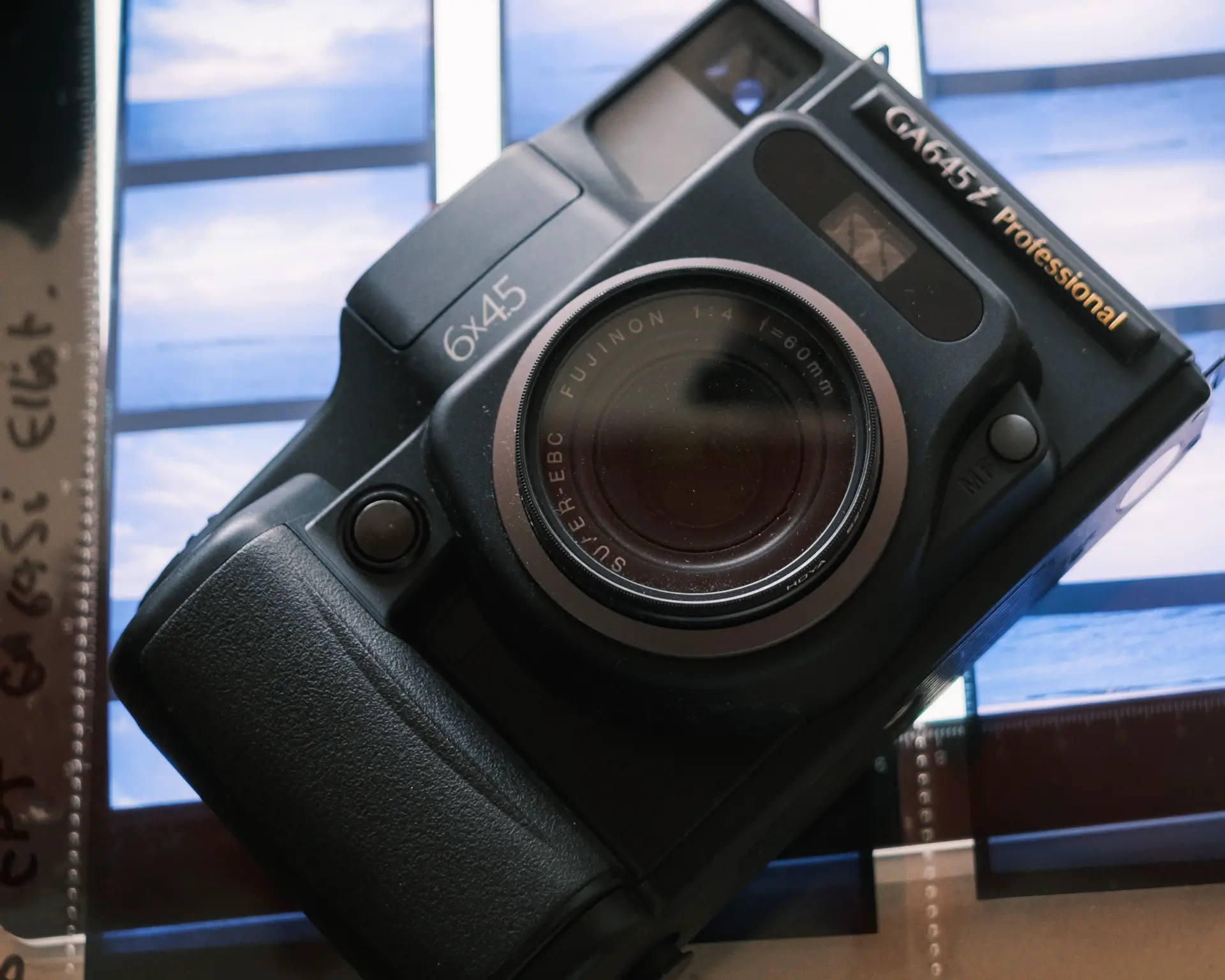
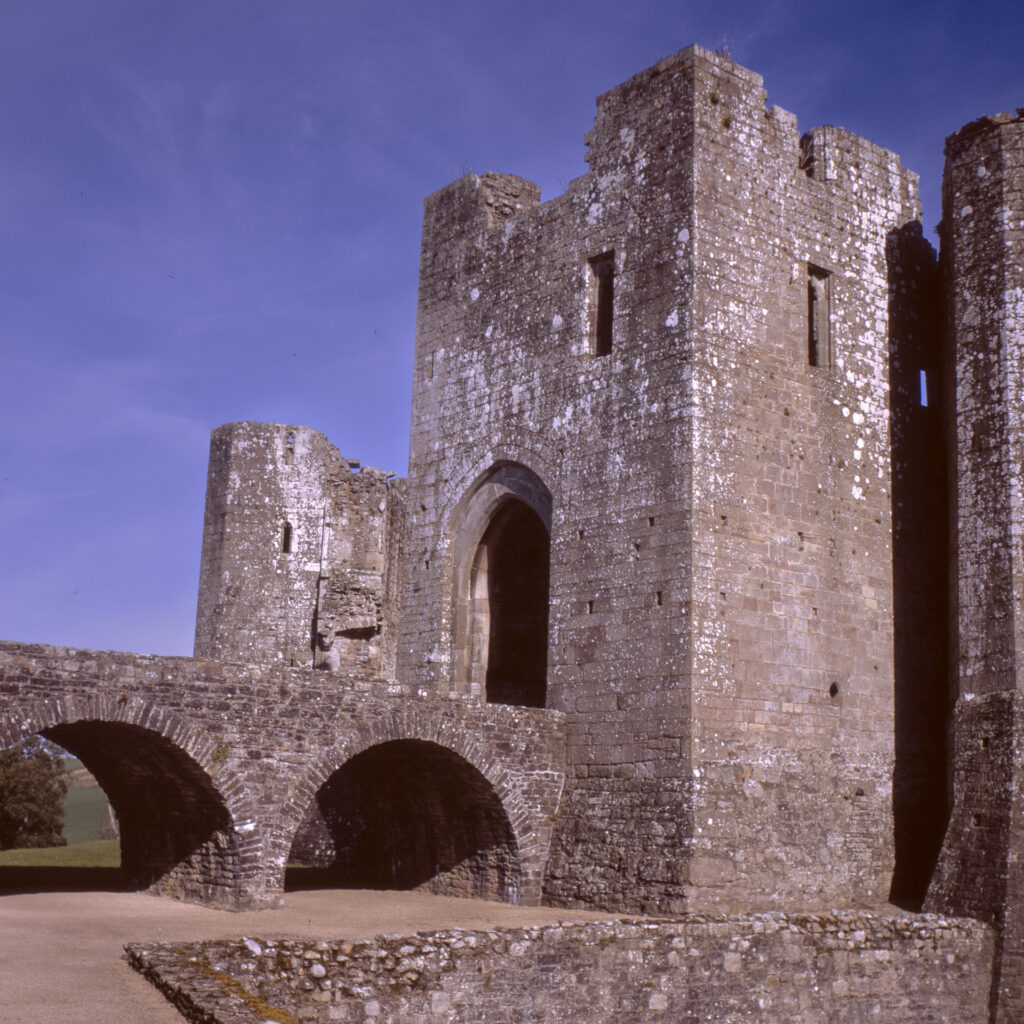
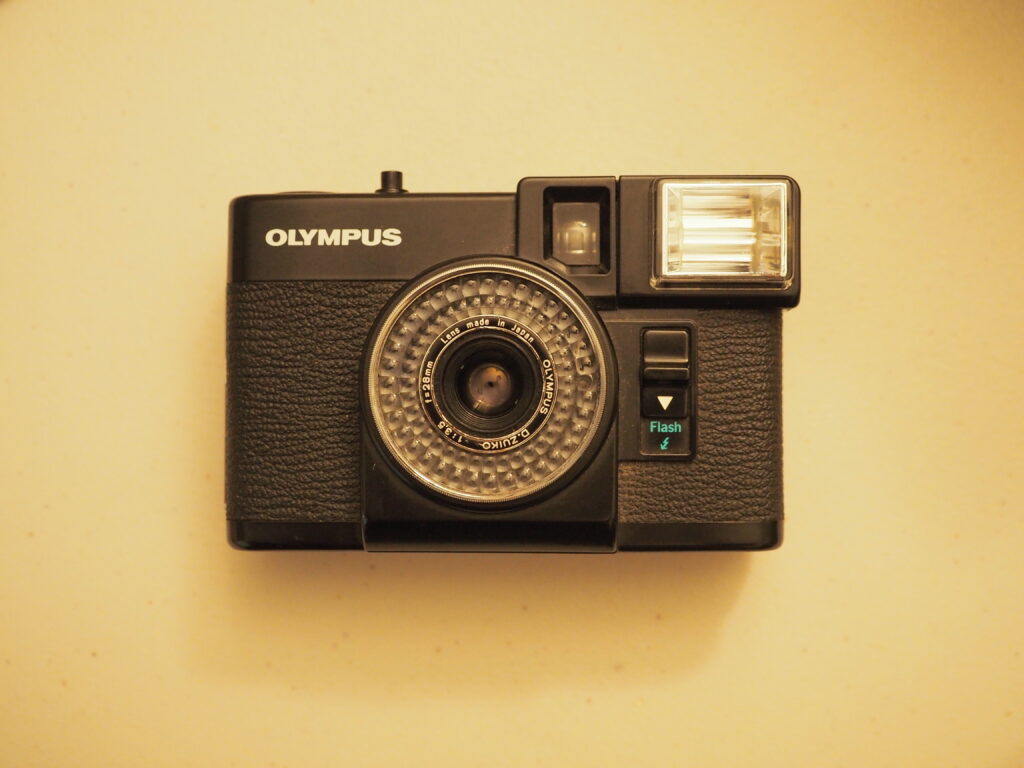

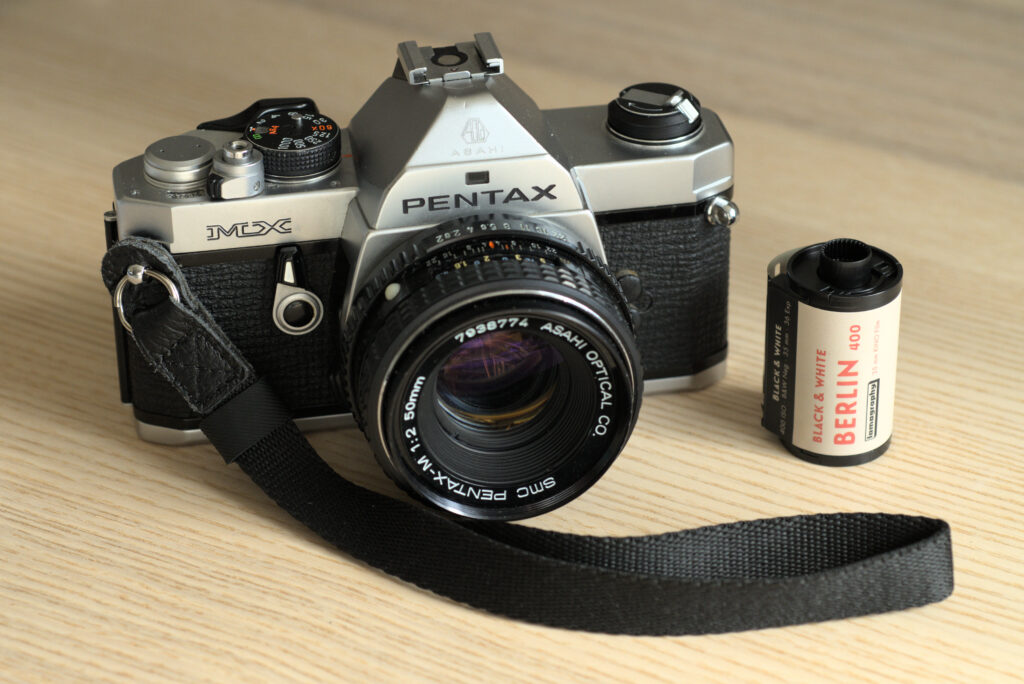




Comments
Gary Sauer-Thompson on 5 Frames and Farewell with Kodak Ektachrome 160T (120 / EI 160 / Fuji GA645i) – By David Hume
Comment posted: 22/11/2021
There is nothing wrong with a square medium format Hasselblad. True, it is not as portable as the in- your-pocket-walk-around-camera like the Agfa Isolette 111 folder. But the Hasselblad would have enabled you to also make these seascapes.
I also use a ittle Sekonic meter on my daily poodlewalks. It is useless for very low light situations, but then so is a hand held film camera. That is where digital comes into its own.
Comment posted: 22/11/2021
RJ on 5 Frames and Farewell with Kodak Ektachrome 160T (120 / EI 160 / Fuji GA645i) – By David Hume
Comment posted: 22/11/2021
Comment posted: 22/11/2021
Comment posted: 22/11/2021
Jay Dann Walker in Melbourne on 5 Frames and Farewell with Kodak Ektachrome 160T (120 / EI 160 / Fuji GA645i) – By David Hume
Comment posted: 23/11/2021
I've had two
ga645s, and while they worked okay enough, I decided to part company with them largely because I prefer shooting horizontals to verticals. That and the autofocus, which I never did trust. Exposure was spot-on with both. Two friends bought them and are still using them, mostly for portraits and pet shots. They love them.
Me, I've stayed with my two 1960s Rolleiflex Ts with 16 exposure kits - they give me horizontal images without having to tilt them to 90 degrees and also, with a bit of 'creative' cranking, 17 shots on a roll of 120, which is this age of insanely anything and everything to do with all things photographic, is a nice plus. So win-win.
A good article. I enjoyed it. Your photography also pleases.
Comment posted: 23/11/2021
Jay Dann Walker in Melbourne on 5 Frames and Farewell with Kodak Ektachrome 160T (120 / EI 160 / Fuji GA645i) – By David Hume
Comment posted: 24/11/2021
Apologies to all for this most obvious mistake. First paragraph, line 2 - sideways, not sidewalks. It does make a difference...
on to your comments now. I had a 'blad - in fact I've owned several in my time, never did bond with the ergonomics, but that's me, not the camera - and the 645 (16) back was my most oft-used. Of two '16s' I bought, one was misaligned or had been dropped and was out of whack, all my negatives lacked sharpness, so I flipped it and bought a newer '16' which did the trick. When I retired in 2012 I sold out of Hasselblads and went back to Rolleis. My 501CM was my most loved one, my 500CM my most used. As for the three ELs I was talked into buying - the less said the better. Ha!
My now-ancient family photo albums from Canada in the 1950s have many 645 contact prints - several aunts had 127 P&S cameras and two uncles had Zeiss Ikonta 645 folders (with Novar lenses as I recall) and all did our family photos (my dad had a 616 Brownie which I used to take my first ever photos in 1959, to me 616 was always a large 645 anyway with only eight shots on a roll, but that's another story) at our Sunday gatherings, garden parties and ceremonials like school graduations. The 645 (also 616 and two other 'oddies', 116 and 122) format was immensely popular with amateurs back then and it's good to see it lives on in the 21st century. With roll film prices as they are nowadays, four extra images on a roll of 120 stretch our money that much further.
Another point worth mentioning - with good lenses, a little care in holding the camera and due attention given to exposures, 16 on 120 will produce negatives and slides as sharp and well-exposed as most other 'pro' formats. Not 4x5, but then nothing else does anyway.
A most excellent article you wrote. I look forward to reading more of your writing. Thanks!
Comment posted: 24/11/2021
Clive W on 5 Frames and Farewell with Kodak Ektachrome 160T (120 / EI 160 / Fuji GA645i) – By David Hume
Comment posted: 26/11/2021
I happen to like your sky pictures, and I hope your friend makes good use of them in her paintings. There's something of the old Dutch masters about your skies. Here's an idea that might not catch on in Australia - or possibly anywhere for much longer.
https://www.nationalgallery.org.uk/paintings/adriaen-van-de-velde-golfers-on-the-ice-near-haarlem
(I do wonder how the golfers got the ball back out of the hole.)
Comment posted: 26/11/2021